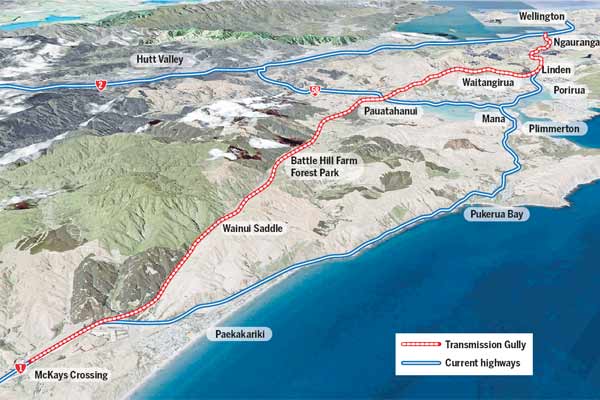Transmission Gully – all roads lead to.... Wellington

This week Craig Nicholson, the Principal Project Manager for the Transmission Gully project, gave us some insight into the histrory, scale and trajectory of this long anticiapted road transport corridor. The 27km four lane, median divided motorway will run between MacKays to Linden and contain a number of interchanges, including a connection to SH1 at Tawa.
The first known reference to something that looked like the current TG was a proposal by an MP in 1919. Desktop design was undertaken in the 1980s and extensive public consultation established there was little appetite for a coastal road, with overwhelming support for the TG alternative. The Western Corridor Transport Study in 2006 confirmed this approach, and a project team was established at that point. Consent applications were made in 2009-2011 and environmental impact analysis undertaken. The contract was let in 2014 and design and construction began, with the opening of TG scheduled for April 2020.
TG is being built under a PPP arrangement – a public private partnership whereby the commercial partner builds the infrastructure and then maintains the road system for 25 years, during which time the government progressively pays the cost and owns the road after 25 years of operation.
There are three key construction challenges for TG. Firstly the scale. 6.5 million cubic meters of material will need to be moved, there are cut heights up to 70 meters and 27 bridges to be built, including the 230m long 60m high Cannons Creek bridge. This will require 2.5 thousand cement trucks worth of concrete for the pylon foundation blocks alone. Secondly, there are access constraints, with only 3 access points along the route which severely constrains how the build can occur. Thirdly there are a number of other services, including power, water and gas supply that need to be moved or built around.
The project involves a number of environmental control measures, including removing native fish and lizard populations which will then be moved back at the completion of the build. Sediment control ponds are building built to handle runoff during the build process, and the build takes account of seismic and climatic conditions.
Craig showed us a number of pictures of the work in progress and left us eagerly anticipating the added convenience of being able to use the Transmission Gully motorway in a few years.
